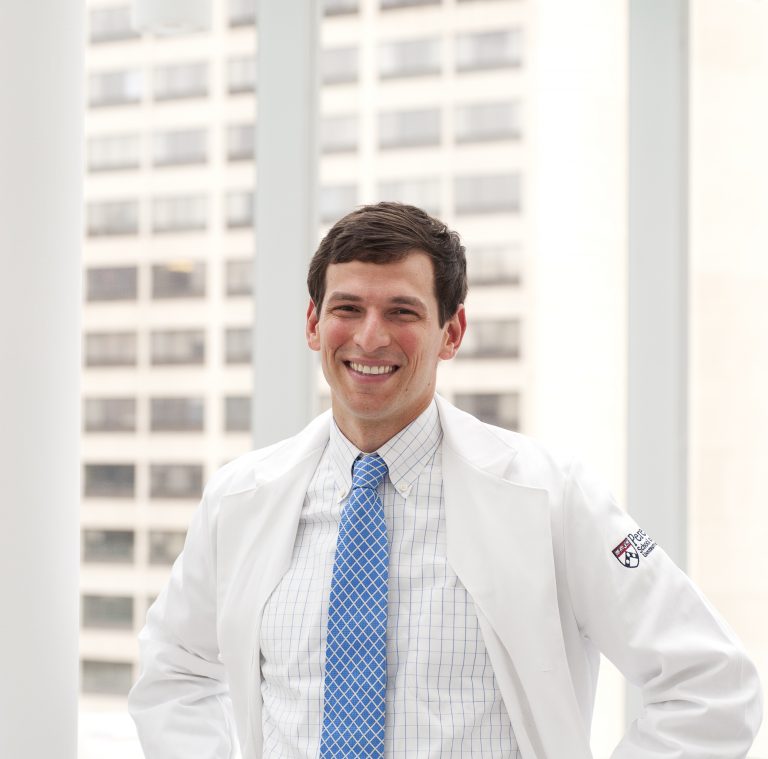
Are Miracle Cures Hiding in Plain Sight? Unlocking the Lifesaving Potential of Old Drugs
This week, we talk with a physician who was struck with a catastrophic illness as a medical student. He nearly died from it; in fact, a priest administered last rites. But David Fajgenbaum wouldn’t give up. He helped find the treatment–an existing drug for a different health condition–that has kept him alive for more than a decade. Now he is working on unlocking the lifesaving potential of old drugs for other patients.
You could listen through your local public radio station or get the live stream at 7 am EDT on your computer or smart phone (wunc.org). Here is a link so you can find which stations carry our broadcast. If you can’t listen to the broadcast, you may wish to hear the podcast later. You can subscribe through your favorite podcast provider, download the mp3 using the link at the bottom of the page, or listen to the stream on this post starting on Sept. 30, 2024.
Miracle Cure Hiding in Plain Sight:
Our guest, Dr. Fajgenbaum, was excited when he discovered that his condition, Castleman disease, was associated with excess MTOR. The acronym stands for Mammalian Target of Rapamycin. Rapamycin, also called sirolimus, is prescribed to transplant patients to keep them from rejecting their new organs. As Dr. Fajgenbaum states, it was sitting on the shelf at the local CVS. Because it was an old drug, doctors had a pretty good idea of its potential side effects and pitfalls. Everyone was delighted to discover that it worked (and is still working) to keep Dr. Fajgenbaum’s Castleman disease in check.
Overcoming Adversity with Hope and Action:
Even during the darkest days of his illness, Dr. Fajgenbaum (a med student in those days) did not give up hope. But he realized that hope needed to be more muscular than simply wishing someone would come up with a cure. He needed action to reinforce the hope. Here are his three steps for overcoming adversity:
- Have a vision of the future.
- Keep your family and close friends near, to provide support to you and each other.
- Take one step (in his case, one breath) at a time.
Unlocking the Lifesaving Potential of Old Drugs:
Medicine has developed numerous medications that work for specific conditions. There are, however, many more human ailments that have no cures or even good treatments. Dr. Fajgenbaum has dedicated himself to investigating the lifesaving potential of old drugs. If drugs exist that could be used to help people who have no other treatments, why not try? Of course, clinical trials are critical to this effort. A theoretical mechanism of action is not enough to ensure that a medication will actually make a difference for a sick patient. The COVID-19 pandemic gave us a few examples, including both meds that worked and ones that didn’t.
Dr. Fajgenbaum’s organization Every Cure has identified 14 drugs with lifesaving potential. One is the PD-1 inhibitor pembrolizumab, initially approved for the treatment of melanoma and certain types of lung cancer. Now, Every Cure has found that this medicine can be helpful against a devastating disease called angiosarcoma. Dr. Fajgenbaum has also found an unexpected use for an asthma drug called omalizumab (Xolair).
One barrier to uncovering the lifesaving potential for old drugs is that most of these existing compounds are no longer on patent. Consequently, the pharmaceutical firms that created and marketed them initially no longer have an incentive to invest in research on them. That is why the work that Every Cure is doing is so important.
This Week’s Guest:
David Fajgenbaum, MD, MBA, MSc, is Associate Professor of Medicine and Founding Director of the Center for Cytokine Storm Treatment & Laboratory (CSTL) at the University of Pennsylvania where he is one of the youngest tenured professors in the history of Penn Medicine. In addition, Dr. Fajgenbaum is Co-Founder & President of Every Cure and Co-Founder & President of the Castleman Disease Collaborative Network (CDCN). He is national bestselling author of Chasing My Cure: A Doctor’s Race to Turn Hope Into Action. The photo of Dr. Fajgenbaum is by Rebecca McAlpin.
You can buy his book from the Amazon link above or from Bookshop.org here: Chasing My Cure: A Doctor’s Race to Turn Hope Into Action.
The People’s Pharmacy is reader supported. When you buy through links in this post, we may earn a small affiliate commission (at no cost to you).

Dr. David Fajgenbaum, University of Pennsylvania
Listen to the Podcast:
The podcast of this program will be available Monday, September 30, 2024, after broadcast on Sept. 28. You can stream the show from this site and download the podcast for free.

